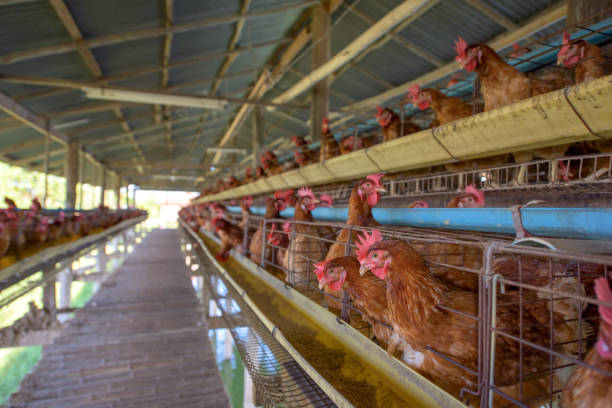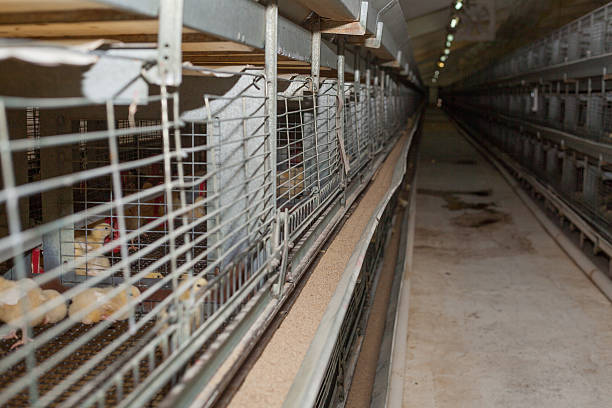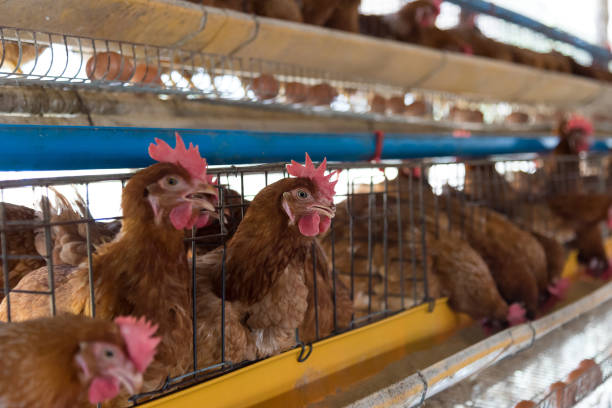Cost-Effective Layer Cage Solutions for 10,000 Chickens in Kenya
Cost-Effective Layer Cage Solutions for 10,000 Chickens in Kenya
Kenya’s poultry industry is experiencing substantial growth, driven by increasing demand for eggs and poultry meat. For Kenyan farmers looking to scale up their operations, understanding cost-effective solutions for housing layer chickens is crucial. This article focuses on outlining practical and efficient layer cage solutions suitable for managing 10,000 chickens, specifically within the Kenyan context, considering the local climate, economic factors, and common farming practices.
The Allure of Layer Cages: Why Choose Cage Systems?
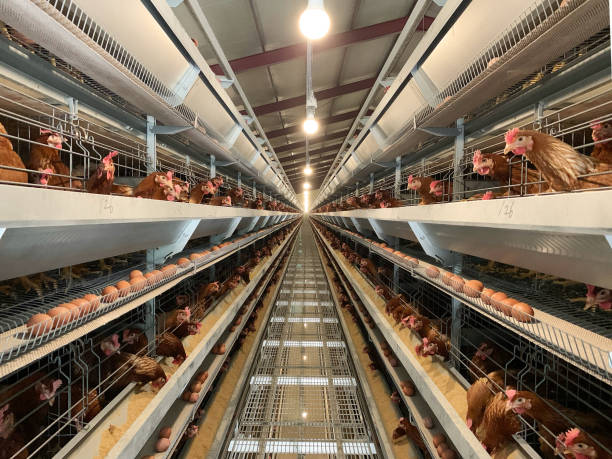
Before delving into specific cage solutions, let’s examine why layer cages are a popular choice for commercial poultry farming. Layer cages offer several key advantages:
Improved Space Efficiency: Cages allow you to house a greater number of birds in a smaller area compared to free-range or deep litter systems. This is especially important in Kenya where land can be a valuable asset. Think of it this way: you can essentially build “up” instead of “out,” maximizing your production per square meter of land.
Better Hygiene and Disease Control: By separating birds from their droppings, cages significantly reduce the risk of disease transmission. The wire mesh floors allow droppings to fall below the cages, preventing chickens from pecking at contaminated waste and minimizing the spread of harmful bacteria and parasites. This translates to healthier birds and lower veterinary costs.
Easier Management and Monitoring: Cages make it much easier to monitor individual bird health and performance. You can quickly identify sick or underperforming chickens and take appropriate action. Also, egg collection becomes more streamlined, reducing the risk of egg breakage and contamination.
Reduced Egg Breakage and Wastage: Eggs roll out of the cages and are collected in a designated area, minimizing contact with the chickens and reducing the chance of them being broken or eaten. This leads to a higher percentage of marketable eggs.
Optimized Feeding and Watering: Cage systems often incorporate automated feeding and watering systems, ensuring that all birds have access to adequate nutrition and hydration. This reduces feed wastage and ensures consistent growth and egg production.
Types of Layer Cage Systems: Tailoring the Solution to Your Needs
Now, let’s look at the different types of layer cage systems available and their suitability for a 10,000-chicken operation in Kenya:
A-Frame Cages: A-frame cages are a traditional and cost-effective option. They are characterized by their A-shaped frame, with tiers of cages stacked on top of each other.
Pros: Relatively inexpensive to purchase and install; simple design makes maintenance easy; good ventilation.
Cons: Higher labor requirements for egg collection and manure removal compared to automatic systems; potential for uneven manure distribution if not properly managed.
H-Frame Cages: H-frame cages are a more modern design, featuring tiers of cages arranged in a vertical stack, supported by a sturdy H-shaped frame.
Pros: Better space utilization compared to A-frame cages; easier access to birds for management and monitoring; often compatible with automatic feeding and manure removal systems.
Cons: Higher initial investment cost compared to A-frame cages; requires a more sophisticated ventilation system.
Fully Automatic Layer Cage Systems: These systems represent the cutting edge of poultry farming technology, incorporating automated feeding, watering, egg collection, and manure removal.
Pros: Significantly reduces labor costs; maximizes egg production efficiency; improves hygiene and disease control; provides a more controlled environment for the birds.
Cons: Highest initial investment cost; requires technical expertise for operation and maintenance; may be less suitable for small-scale farmers with limited resources.
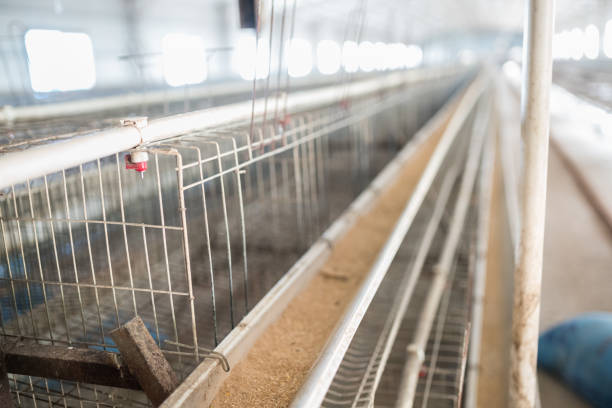
Choosing the Right Cage System: Key Considerations for Kenyan Farmers
Selecting the most cost-effective layer cage solution for your 10,000 chickens requires careful consideration of several factors specific to the Kenyan context:
Budget: This is a primary driver. Determine your available capital for the initial investment, including the cost of the cages, installation, and any necessary infrastructure upgrades (e.g., building modifications, electrical wiring, water supply). A-frame cages offer the most affordable option, while fully automatic systems represent the high end. H-Frame offers a good mid-range solution balancing cost and automation.
Labor Availability and Cost: Kenya has a readily available workforce, but labor costs are rising. Consider the long-term cost of labor versus the investment in automation. If you can afford the upfront investment, automating feeding, watering, and manure removal can significantly reduce your reliance on manual labor, leading to long-term cost savings.
Climate: Kenya’s climate varies significantly depending on the region, from hot and humid coastal areas to cooler highlands. Ensure that the cage system you choose provides adequate ventilation and temperature control to maintain optimal bird comfort and productivity. Consider features like natural ventilation openings, fans, and potentially cooling pads in hotter regions.
Local Regulations and Standards: Familiarize yourself with any local regulations or standards regarding poultry housing and waste management. Ensure that your chosen cage system complies with these regulations to avoid penalties.
Availability of Spare Parts and Technical Support: Opt for a cage system from a reputable supplier that offers readily available spare parts and reliable technical support in Kenya. This is crucial for ensuring the long-term functionality and profitability of your operation. Consider suppliers with local presence or partnerships with local technicians.
Power Supply Reliability: Power outages are a common occurrence in some parts of Kenya. Invest in a backup power generator or solar power system to ensure continuous operation of essential equipment, such as feeding, watering, and ventilation systems, in the event of a power failure.
Manure Management: Proper manure management is essential for environmental sustainability and preventing odor problems. Choose a cage system that facilitates efficient manure collection and removal. Consider options for composting or using the manure as fertilizer to generate additional income.
Biosecurity Measures: Implement strict biosecurity measures to prevent the introduction and spread of diseases. This includes controlling access to the poultry house, disinfecting equipment and footwear, and implementing a vaccination program.
Calculating the Cost-Effectiveness: A Practical Approach
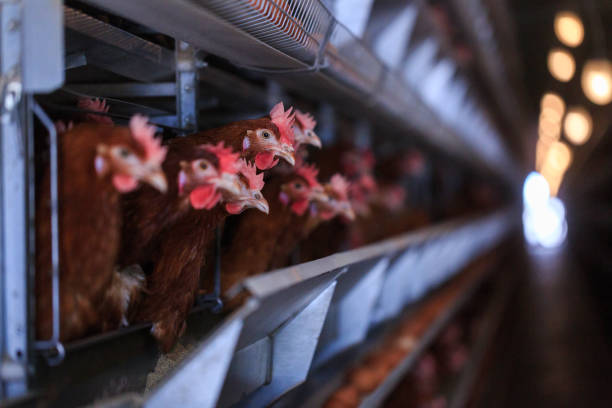
To determine the most cost-effective solution, it’s important to calculate the total cost of ownership (TCO) for each cage system over its expected lifespan. This includes:
Initial Investment Cost: Cage system, installation, building modifications.
Operating Costs: Feed, water, electricity, labor, veterinary expenses, repairs, and maintenance.
Egg Production Revenue: Projected egg production based on hen-housed egg production rates and egg prices.
Manure Sales Revenue (if applicable): Revenue from selling or using manure as fertilizer.
By comparing the TCO of different cage systems, you can identify the option that offers the highest return on investment (ROI) for your 10,000-chicken operation.
Specific Practical Tips for Kenyan Farmers:
Local Materials: Explore the possibility of using locally sourced materials for building the poultry house and some cage components to reduce costs. Consult with local builders and suppliers to identify suitable options.
DIY Modifications: Consider making simple DIY modifications to the cage system to improve its functionality or adapt it to your specific needs. For example, you can add extra ventilation openings or modify the feeding system to suit your preferred feed type.
Phased Expansion: If your budget is limited, consider a phased expansion approach. Start with a smaller number of cages and gradually expand your operation as your business grows.
Group Buying: Partner with other farmers in your area to purchase cages and equipment in bulk, which can often result in significant cost savings.
Seek Government Support: Explore available government programs and subsidies that support poultry farming in Kenya. These programs may offer financial assistance or training to help you establish and manage your operation.
Consider Community: Local knowledge is invaluable. Consult with experienced poultry farmers in your area to learn from their successes and avoid common pitfalls.
The Path to Success: A Holistic Approach
Choosing the right layer cage system is just one piece of the puzzle. To achieve success in poultry farming, you need a holistic approach that encompasses:
High-Quality Chicks: Start with healthy, disease-resistant chicks from a reputable hatchery.
Proper Feeding and Nutrition: Provide a balanced diet that meets the nutritional needs of layer chickens at different stages of production.
Effective Disease Prevention and Control: Implement a comprehensive vaccination program and maintain strict biosecurity measures.
Good Management Practices: Monitor bird health and performance closely, and address any problems promptly.
In conclusion, selecting cost-effective layer cage solutions for 10,000 chickens in Kenya requires careful consideration of budget, labor availability, climate, local regulations, and long-term profitability. By choosing the right cage system and implementing sound management practices, Kenyan farmers can unlock the full potential of their poultry operations and contribute to the growth of the country’s thriving poultry industry. Remember to prioritize reliable suppliers who understand the nuances of poultry farming in Kenya, offering not just equipment, but also valuable expertise and support. By embracing a forward-thinking approach, Kenyan poultry farmers can create sustainable and profitable businesses that benefit both their families and the nation as a whole.



